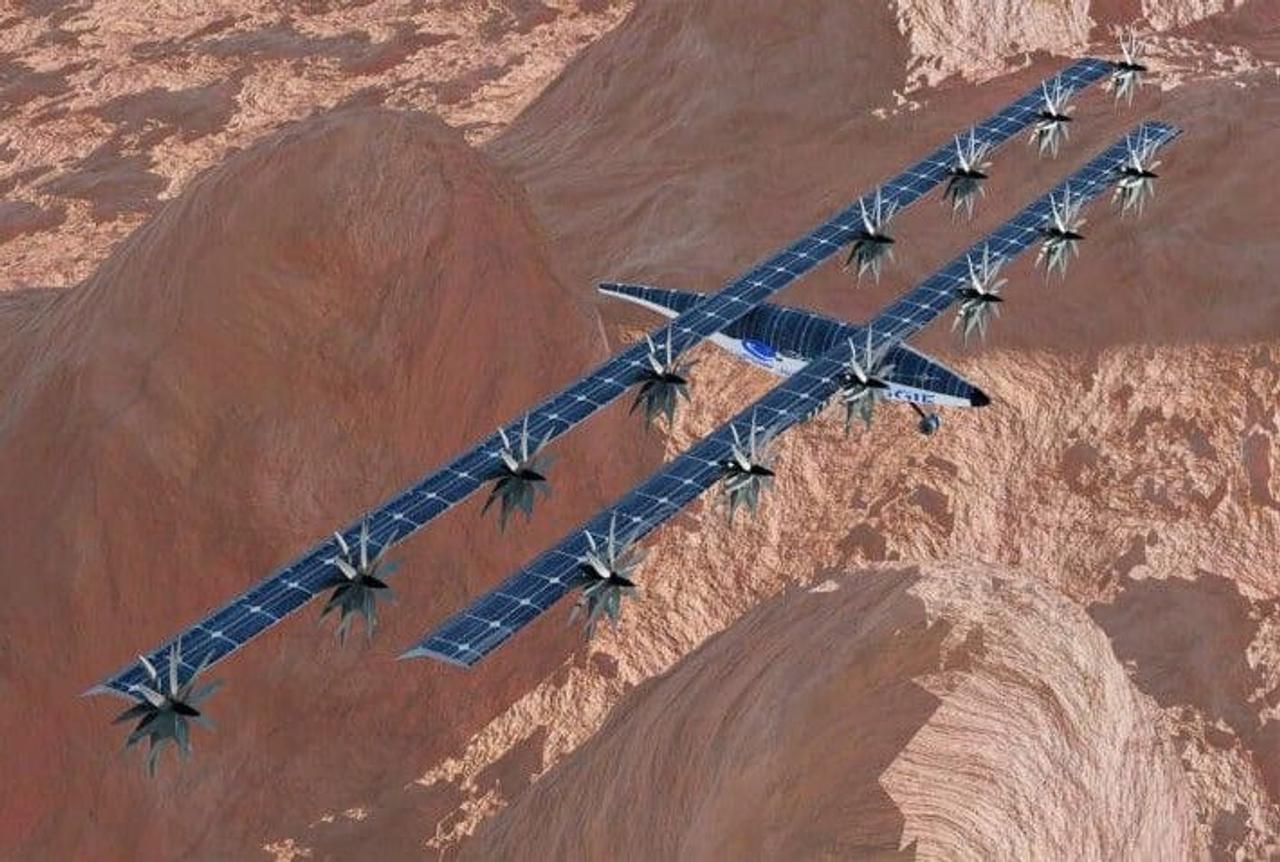
NASA will create an innovative solar-powered aircraft for Mars exploration
NASA is developing a new concept of a solar-powered aircraft capable of flying over the surface of Mars. This concept, known as the Mars Aerial and Ground Intelligent Explorer (MAGGIE), was announced as part of the Innovative Advanced Concepts (NIAC) program.
MAGGIE is a compact, ultra-high performance solar-powered aircraft designed to fly in the Martian atmosphere. It can take off and land vertically thanks to the innovative CoFlow Jet deflection technology.
MAGGIE can fly at Mach 0.25 with a lift coefficient of CL 3.5, which is almost 10 times higher than that of subsonic conventional aircraft. This is a remarkable result, given the low density of the Martian atmosphere. The ultra-high cruising CL of CL/CDc 9 was made possible by the CFJ, which overcomes the effect of the low Reynolds number on Mars.
The MAGGIE has a flight range of 179 km with a fully charged battery in 7.6 Martian days (sol) at an altitude of 1000 meters. Its entire range is estimated at 16048 kilometers during a Martian year.
The MAGGIE system study suggests that this concept could be viable, but more research, design, and testing in the Martian atmosphere are needed. If successful, MAGGIE will be able to perform the first atmospheric mission on Mars and open up new opportunities for exploring the surface of Mars.

